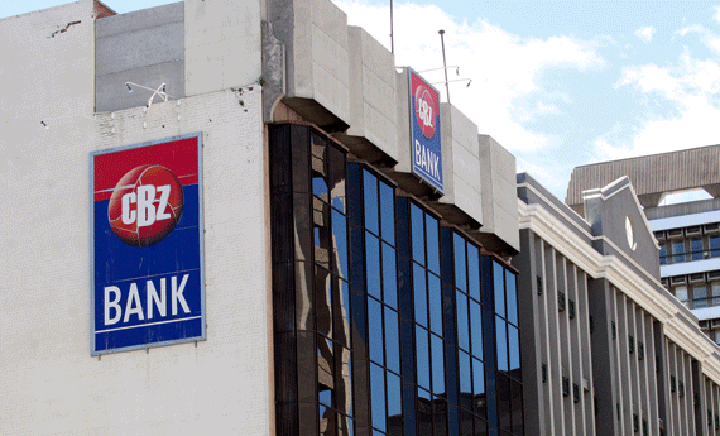‘The bigger the banks, the better the economy’
CBZ Bank, the biggest bank in the country, is growing bigger as it grows in underwriting capacity and our hope is that so does the economy.
The bank acquired 31,22 percent of FMHL from NSSA and according to the terms of the contract, the consideration is a blend of cash and a share swap in a 30/70 ratio. The rationale behind the share swap is to leverage CBZ’s strong share price on the Zimbabwe Stock Exchange and use it as currency for this transaction.
The bank’s management believes this transaction will unlock further value for existing shareholders and allow for more wealth creation.
It is also understood that CBZ Bank is in the hunt of another financial services group, ZB Financial Holdings Limited, but it is being held by shareholder squabbles in ZB Building Society over Intermarket shares. However, if it succeeds, this will see the CBZ group with an asset base of over US$2,5 billion.
CBZ Bank chairman, Marc Holtzman said; “The cash component will be paid in USD as this was at the request of the seller and we ultimately believe this is a sound investment given the quality of the asset being purchased and the diversity FMHL will bring through its investments in the SADC region.
According to the chairman, the bank is entering this merger as a way to diversify the earnings of the group and ensure value is retained for shareholders and as well as to strengthen its domestic and regional footprint and become a truly Pan-African financial institution.
“As a bank, we were given a mandate by President Mnangagwa to create a Pan–African bank that will drive growth in the country as is done by other financial institutions,” Mr Holtzman said.
For the benefit of the country, CBZ Bank has to become a regional player and I believe the acquisition of FMHL is a key part of this process as they have successfully established themselves in other jurisdictions within SADC and the goal of this merger is to maximise shareholder value and create an important corporate citizen in the process.
The merger is also a way to gather the best financial talents in this country under one roof and use those talents to build and develop this nation and become the centre of financial transactions in this region.
There is no doubt that the effect of this merger is that with the unlocking of synergies between the businesses, any dilution done will be outweighed by the value gained by the bigger company.
In Zimbabwe we have had to source funding of critical infrastructure from South African banks, mainly Standard Bank because it has the underwriting capacity.
In 2021, Stanbic Bank and its parent company, Standard Bank Group recently availed a US$21,6 million loan facility for the sprucing up of the Beitbridge Border Post and its environs.
The loan facility was availed to a concession holding company Zimborders Mauritius (Zimborders) towards the rehabilitation and modernisation of Zimbabwe’s side of the Beitbridge Border Post as well as the development of associated infrastructure in and around the town of Beitbridge.
In March 2023, Zimbabwe sought to raise US$193 million in offshore lending to implement a 2019 agreement with UK infrastructure company NMS for the construction of hospitals and clinics in the country.
ABSA and Standard bank of South Africa were chosen to be the joint arrangers for the transaction, which will be insured by Export Credit Insurance Corporation of South Africa.
So the growth of CBZ Bank should be seen as a step in the right direction for the economy and not a monster for the benefactors.
However, the fear is that as the bank swells in size, so does the potential risk it poses to the nation’s financial system.
For example, some experts say they are concerned that the US Bank, JPMorgan’s continued intervention during times of crisis has broader implications for the banking sector, the US financial system and its regulation.
JPMorgan has a staggering US$3,67 trillion in assets, not accounting for its latest acquisition. The bank’s tremendous size means it is often viewed as an economic bellwether and an entity that is “too big to fail.”
The bank has gained a reputation as the first line of backup during crises for its history of interventions.
When Bear Stearns collapsed in 2008, JPMorgan stepped in to purchase it.
Six months later, when Washington Mutual collapsed in the largest US bank failure ever, the lender acquired its banking assets.
Critical question in respect to CBZ Bank would be whether the bank will play a quasi-public role that lends itself to a growing number of stakeholders.
It has been doing these acquisitions, but now it is kind of much more visible, and in the future it will be whatever strategic business decisions that CBZ Bank takes on its own for its own business, will fundamentally shape the direction of the entire banking sector and financial sector in Zimbabwe.
And with every financial institution that CBZ Bank snaps up, the conundrum will become clearer, CBZ Bank is essentially going to be the biggest risk to the financial system and every time it expands to uphold the sector’s stability, so does its risk to the financial system.
Tapiwanashe Mangwiro is a resident economist with the Business Weekly and writes this in his own capacity. @willoe_tee on twitter and Tapiwanashe Willoe Mangwiro on LinkedIn









